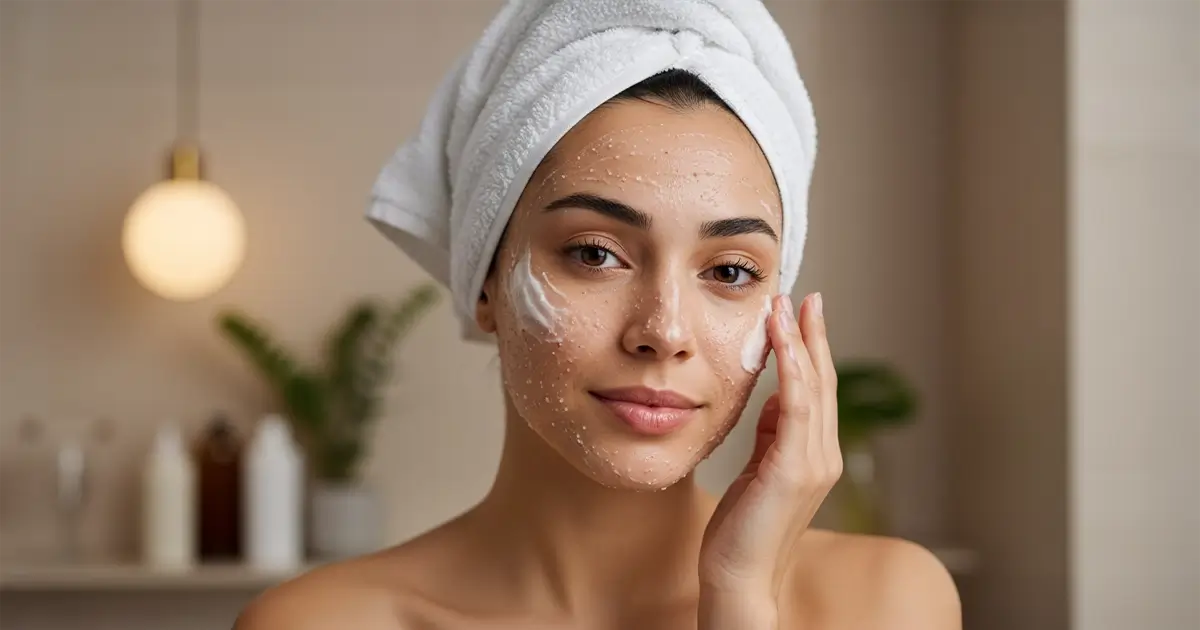Is grabbing a gritty face scrub every morning the fast track to glowing, spotless skin, or a shortcut to redness and regret? Today I unpack the science, the myths, and the sweet spot for daily scrubbing, clean skin, and overall exfoliation in a breezy 9-minute read.
Why We Reach for a Scrub and When It Backfires
I get it, the satisfying polish of a physical exfoliant feels like washing away a week of stress, makeup, and city grime in seconds. That tactile "squeaky-clean" sensation releases a tiny rush of dopamine, which is why so many of us treat scrubbing like morning coffee.
However, mechanical exfoliation - anything involving grains, brushes, or cloths - also removes portions of the stratum corneum. According to a peer-reviewed paper in the Journal of Cosmetic Dermatology, frequent abrasion can disrupt the lipid matrix that seals moisture inside, leaving skin vulnerable to dehydration and pollutants.
Things escalate fast if you pair a scrub with retinoids, topical acne treatments, or enthusiastic towel drying. Micro-tears can appear, setting off inflammation that quietly chips away at your barrier until one day even tap water stings.
Micro-Tears and Barrier Disruption
Picture sanding an antique table every single day: eventually the varnish disappears, and the wood splinters. Skin works the same way. Once the outer shield thins, transepidermal water loss rises, prompting compensatory oiliness that masquerades as a "dirty" feeling - and the cycle repeats.
The American Academy of Dermatology warns that over-scrubbing can invite dermatitis, post-inflammatory hyperpigmentation, and flare-ups in conditions like rosacea. Their guideline recommends physical exfoliation no more than twice weekly for most adults.
Your Skin Type Dictates the Rules
Every complexion is unique, yet many product labels ignore that nuance. I wish jars came with a "one size never fits all" sticker. Understanding your skin's baseline behaviour is the compass that keeps you from scrubbing in the dark.
Dermatologists divide skin into several broad categories, each with its own tolerance for friction. Here is a handy snapshot:
- Oily or acne-prone: Handles gentle physical exfoliation up to two times per week, but prefers salicylic acid pads on alternate days.
- Dry or mature: Flourishes with enzyme powders or lactic acid once weekly; daily scrubs drain much-needed sebum.
- Sensitive or rosacea-prone: Benefits from microfiber cloths and fragrance-free cleansers; granular pastes are almost always too rough.
- Combination: Mixes and matches - think a soft konjac sponge on the T-zone Monday, a mild chemical peel on the cheeks Friday.
A Harvard Health article notes that chemical exfoliants in low concentrations achieve smoother skin with less friction, especially in sensitive groups. Their experts even suggest starting with a damp wash-cloth before graduating to stronger options.
Environmental and Lifestyle Factors
If you live in a dry, windy climate or spend hours in air-conditioned offices, your barrier is already battling low humidity. Layering daily scrubs on top is like scheduling leg day after a marathon. Give your face recovery time and extra emollients.
Night owls (guilty as charged) should remember that epidermal renewal peaks while we sleep. Too little shut-eye slows repair, meaning skin sees the full brunt of abrasion the next morning. Beauty sleep may sound like folklore, but the circadian rhythm research is solid.
Best Practices If You Refuse to Break Up with Your Loofah
I'm not here to confiscate your favourite tub of sugar scrub. Instead, let's make the relationship healthier. These tactics keep the polish without the price.
- Choose fine, rounded particles. Nut shells and apricot pits look eco-friendly but cause jagged cuts. Opt for jojoba beads or silica spheres that glide.
- Limit contact time. Sixty seconds is plenty. Vigorous, prolonged rubbing delivers diminishing returns and rising irritation.
- Follow with a humectant. A few drops of hyaluronic serum seal micro-channels left by exfoliation, preventing the tight squeak that tempts over-moisturising.
- Sun protection is non-negotiable. Freshly buffed skin is more photosensitive. A broad-spectrum SPF 30 keeps newly revealed cells happy.
Still eager for a daily smooth-skin ritual? Swap two scrub sessions a week for a gentle low-pH cleanser on the other days. If you crave more guidance, my deep dive on soft-acid choices - Choosing AHA, BHA, or PHA: Exfoliation Without Overdoing - has step-by-step suggestions.
Signs You Are Over-Exfoliating
Red flags include persistent redness, shiny tightness that flakes by lunchtime, sudden breakouts along the jaw, and products that tingle more than usual. If two or more tick your box, pause scrubbing for ten days and layer ceramide-rich moisturisers.
One joke to keep it light: if your shower soundtrack resembles someone sanding a wooden floor, it might be time to dial the enthusiasm down a notch - your cheeks are not antique furniture.
FAQ
How often is it safe to exfoliate with a physical scrub?
Most dermatologists say one to two times weekly for resilient, oily skin, and once weekly or less for dry or sensitive types.
Does scrubbing help with acne?
It can unblock pores, yet overdoing it may inflame lesions. Combine sparse physical exfoliation with salicylic acid for safer results.
Are natural scrubs better than synthetic ones?
Not necessarily. "Natural" particles can be sharp, whereas lab-made beads are designed to be perfectly round and gentler.
Can I use a scrub if I already apply retinoids?
Space them apart by at least 48 hours, or you risk peeling and sensitivity. Many people skip scrubs entirely while on prescription retinoids.
What is the best post-scrub moisturiser?
Look for formulas with ceramides, niacinamide, and glycerin. These ingredients rebuild barrier lipids and soothe micro-injuries.
Conclusion
Daily scrubbing feels rewarding, yet science shows our skin usually thrives on gentler, less frequent buffing. Factor in your skin type, environment, and existing actives before deciding how often to reach for the grit.
I hope this clears up the fuzzy area between clean and compromised. Share your experiences below, and see you in the next post - until then, take good care of your skin!


Comments (0)
No comments yet - be the first to share your thoughts!
Leave a Reply
Your email address will not be published. Required fields are marked *